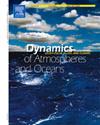Radiation partitioning in a cloud-rich tropical mountain rain forest of the S-Ecuadorian Andes for use in plot-based land surface modelling
IF 1.9
4区 地球科学
Q2 GEOCHEMISTRY & GEOPHYSICS
引用次数: 0
Abstract
Understanding the partitioning of downward shortwave radiation into direct and diffuse components is essential for modeling ecosystem energy fluxes. Accurate partitioning functions are critical for land surface models (LSMs) coupled with climate models, yet these functions often depend on regional cloud and aerosol conditions. While data for developing semi-empirical partitioning functions are abundant in mid-latitudes, their performance in tropical regions, particularly in the high Andes, remains poorly understood due to scarce ground-based measurements. This study analyzed a unique dataset of shortwave radiation components from a tropical mountain rainforest (MRF) in southern Ecuador, developing and testing a locally adapted partitioning function using Random Forest Regression. The model achieved high accuracy in predicting the percentage of diffuse radiation (%Dif; R2=0.95, RMSE = 5.33, MAE = 3.74) and absolute diffuse radiation (R2=0.99, RMSE = 5.30, MAE = 14). When applied to simulate upward shortwave radiation, the model outperformed commonly used partitioning functions achieving the lowest RMSE (8.62) and MAE (5.82) while matching the highest R2 (0.97). These results underscore the importance of regionally adapted radiation partitioning functions for improving LSM performance, particularly in complex tropical environments. The adapted LSM will be further utilized for studies on heat fluxes and carbon sequestration.
南厄瓜多尔安第斯山脉云量丰富的热带山地雨林的辐射分区,用于基于地块的地表模拟
理解向下的短波辐射分为直接和漫射分量对模拟生态系统能量通量至关重要。准确的划分函数对于与气候模式相结合的陆地表面模式(lsm)至关重要,然而这些函数往往取决于区域云和气溶胶条件。虽然开发半经验分配函数的数据在中纬度地区丰富,但由于缺乏地面测量,它们在热带地区,特别是安第斯山脉高地区的表现仍然知之甚少。本研究分析了来自厄瓜多尔南部热带山地雨林(MRF)的独特短波辐射成分数据集,利用随机森林回归开发并测试了一个局部适应的分区函数。该模型在预测漫射辐射百分比(%Dif;R2=0.95, RMSE = 5.33, MAE = 3.74)和绝对漫射(R2=0.99, RMSE = 5.30, MAE = 14)。当应用该模型模拟向上短波辐射时,该模型优于常用的划分函数,达到最低RMSE(8.62)和MAE(5.82),并匹配最高R2(0.97)。这些结果强调了区域适应辐射分配函数对于改善LSM性能的重要性,特别是在复杂的热带环境中。改进后的LSM将进一步用于热通量和碳固存的研究。
本文章由计算机程序翻译,如有差异,请以英文原文为准。
求助全文
约1分钟内获得全文
求助全文
来源期刊

Dynamics of Atmospheres and Oceans
地学-地球化学与地球物理
CiteScore
3.10
自引率
5.90%
发文量
43
审稿时长
>12 weeks
期刊介绍:
Dynamics of Atmospheres and Oceans is an international journal for research related to the dynamical and physical processes governing atmospheres, oceans and climate.
Authors are invited to submit articles, short contributions or scholarly reviews in the following areas:
•Dynamic meteorology
•Physical oceanography
•Geophysical fluid dynamics
•Climate variability and climate change
•Atmosphere-ocean-biosphere-cryosphere interactions
•Prediction and predictability
•Scale interactions
Papers of theoretical, computational, experimental and observational investigations are invited, particularly those that explore the fundamental nature - or bring together the interdisciplinary and multidisciplinary aspects - of dynamical and physical processes at all scales. Papers that explore air-sea interactions and the coupling between atmospheres, oceans, and other components of the climate system are particularly welcome.
 求助内容:
求助内容: 应助结果提醒方式:
应助结果提醒方式:


